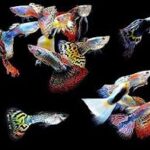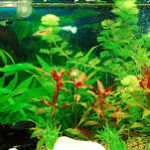The Historical and Cultural Roots of Long Asian Hair
Long hair has always held deep significance in many Asian cultures, symbolizing beauty, health, and even social status. For centuries, long, flowing locks have been more than just a fashion statement—they have been intertwined with tradition, folklore, and identity.
Ancient Beliefs and Symbolism
In ancient China, long hair was considered a precious part of the body, inherited from one’s parents. Cutting it was seen as disrespectful to one’s ancestors. Confucian values emphasized that hair should be kept long and well-maintained as a sign of filial piety. Similarly, in Japan, the Heian period (794–1185) celebrated extremely long hair as the height of feminine beauty, with noblewomen growing their hair to floor-length.
Korean traditions also placed great importance on hair, with married women styling their hair in elaborate buns, while unmarried women wore it long and braided. These customs were not just about aesthetics but also reflected a woman’s marital status and societal role.
Mythology and Folklore
Asian mythology is rich with tales of long-haired figures. In Chinese legends, the goddess Chang’e, who lives on the moon, is often depicted with cascading black hair. Japanese folklore speaks of Yuki-onna, a spirit with long, snow-white hair, embodying both beauty and mystery. These stories reinforced the idea that long hair was magical, ethereal, and powerful.
Hair as a Status Symbol
During feudal times, hair length could indicate social rank. In many Asian societies, only the wealthy and noble could afford the time and resources to maintain long, healthy hair. Peasants, who worked labor-intensive jobs, often kept their hair short for practicality. Thus, long hair became a silent yet powerful marker of privilege and elegance.
The Shift Towards Modern Perceptions
As Asia modernized, Western influences began to change beauty standards. The 20th century saw more women cutting their hair short for convenience, especially as they entered the workforce. However, the cultural reverence for long hair never fully disappeared. Instead, it evolved, blending tradition with contemporary fashion.
Long Asian hair is deeply rooted in history, carrying centuries of cultural meaning. From ancient rituals to mythological tales, it has always been more than just a style—it is a symbol of heritage, identity, and timeless beauty. As society progresses, these traditions continue to influence modern trends, proving that the allure of long Asian hair remains as strong as ever.
The Evolution of Long Asian Hair in Modern Fashion
While long hair has always been cherished in Asian cultures, its role in modern fashion has transformed dramatically. Today, it is not just a cultural emblem but also a global trend, embraced by celebrities, influencers, and everyday individuals.
The Influence of K-Pop and J-Pop
The global rise of Korean pop (K-Pop) and Japanese pop (J-Pop) has played a huge role in popularizing long Asian hair. Idols like BLACKPINK’s Lisa and TWICE’s Tzuyu showcase sleek, waist-length hair, setting beauty standards for millions of fans. Their ever-changing hairstyles—from silky straight to voluminous waves—inspire trends worldwide.
Japanese anime and manga have also contributed to this phenomenon. Characters like Sailor Moon and Rapunzel-esque figures in Studio Ghibli films romanticize long hair, making it a desirable trait among younger generations.
The Fusion of Traditional and Contemporary Styles
Modern hairstyling techniques have allowed long Asian hair to be more versatile than ever. Traditional hairstyles like the Chinese braided updo or the Japanese “nihongami” are now reinterpreted with modern twists. For example, the “hime cut,” a style inspired by ancient princesses, has become a trendy look today.
Celebrity hairstylists often blend cultural elements with current trends, creating unique looks that honor heritage while staying fashion-forward. This fusion keeps long Asian hair relevant in an ever-changing beauty landscape.
The Role of Social Media
Platforms like Instagram, TikTok, and YouTube have amplified the popularity of long Asian hair. Haircare tutorials, transformation videos, and styling tips go viral, encouraging people to grow and maintain their locks. Hashtags like #LongHairGoals and #AsianHairCare attract millions of posts, creating a global community of long hair enthusiasts.
Challenges and Maintenance
Despite its beauty, long hair requires dedication. Many Asians follow strict haircare routines involving natural oils, rice water rinses, and specialized combs to prevent damage. The rise of K-beauty and J-beauty products has also introduced advanced serums and treatments designed to keep long hair shiny and strong.
Long Asian hair has seamlessly transitioned from a cultural tradition to a modern fashion statement. Thanks to pop culture, social media, and innovative styling, it continues to captivate people worldwide. Its evolution proves that while trends may come and go, the appeal of long, luxurious hair remains timeless.
The Science and Care Behind Long, Healthy Asian Hair
Long, lustrous Asian hair doesn’t happen by chance—it’s the result of generations of knowledge, meticulous care, and modern science. While genetics play a role, the right practices and treatments make all the difference in maintaining strong, flowing locks.
The Unique Structure of Asian Hair
Asian hair is known for its thickness, straightness, and resilience, but it also has distinct characteristics that require special attention.
- Thicker Cuticles – Compared to other hair types, Asian hair has more cuticle layers, making it stronger but also prone to dryness if not moisturized properly.
- Slower Growth Rate – While many believe Asian hair grows faster, studies show it actually grows at a similar rate to other hair types (about 0.5 inches per month). However, its strength means less breakage, allowing it to retain length more effectively.
- Resistance to Curling – The round shape of Asian hair follicles makes it naturally straight, which is why chemical treatments or heat styling require extra care to avoid damage.
Understanding these traits helps in choosing the right products and routines to maintain long, healthy hair.
Traditional Asian Haircare Secrets
For centuries, Asian cultures have relied on natural remedies to promote hair growth and strength. Many of these methods are still used today and have even gained global popularity.
Rice Water Rinses
A centuries-old practice in China and Japan, fermented rice water is rich in amino acids, vitamins, and minerals that strengthen hair. Women in the Yao tribe, known for their floor-length hair, credit rice water rinses for their legendary locks.
Scalp Massages with Natural Oils
In India and Southeast Asia, Ayurvedic traditions emphasize scalp health using oils like coconut, sesame, and camellia. Regular massages improve blood circulation, encouraging growth and preventing hair loss.
Herbal Infusions
Ginseng, green tea, and goji berry extracts are often used in Asian haircare to nourish follicles and add shine. These ingredients are now common in high-end shampoos and serums.
Modern Haircare Innovations
While traditional methods remain effective, modern science has introduced advanced treatments to enhance hair health.
K-Beauty and J-Beauty Hair Products
Korean and Japanese brands like Shiseido, Mise en Scène, and Tsubaki specialize in sulfate-free shampoos, deep-conditioning masks, and leave-in treatments that protect against heat and environmental damage.
Heat Protection and Repair
With the rise of styling tools, thermal protectants and ceramide-infused serums help prevent split ends and breakage. Korean “glass hair” trends rely on these products to achieve a ultra-smooth, reflective finish.
Diet and Supplements
Nutrition plays a crucial role in hair health. Collagen peptides, biotin, and omega-3 supplements—popular in Asia—support keratin production and scalp hydration from within.
Common Hair Challenges and Solutions
Despite its strength, long Asian hair faces several challenges:
- Frizz and Humidity Damage – High humidity can cause puffiness. Anti-frizz serums and hydrating masks help maintain sleekness.
- Thinning Due to Stress – Increased stress levels can lead to hair loss. Scalp treatments with caffeine or peppermint oil stimulate follicles.
- Chemical Processing Risks – Bleaching and perming can weaken hair. Olaplex-like bond repair treatments are now widely used in Asia to restore damaged strands.
The secret to long, beautiful Asian hair lies in a balance of ancient wisdom and modern science. From rice water rinses to cutting-edge serums, the right care ensures that this cultural treasure remains strong, shiny, and enviable. As more people embrace these techniques, the legacy of long Asian hair continues to thrive in the global beauty scene.
The Future of Long Asian Hair – Innovation and Cultural Influence
As beauty trends evolve, long Asian hair continues to captivate the world, blending tradition with cutting-edge innovation. Sustainability, technology, and global cultural exchange are shaping its future, ensuring its relevance for generations to come.
Sustainability and Ethical Haircare
With increasing awareness of environmental impact, the haircare industry is shifting toward eco-friendly practices—many pioneered in Asia.
Zero-Waste Haircare Routines
Japanese and Korean brands lead the way with refillable shampoo bars, biodegradable hair masks, and compostable packaging. Traditional ingredients like rice bran and green tea are being revived as sustainable alternatives to synthetic additives.
Slow Beauty Movement
The concept of “less is more” is gaining traction. Instead of frequent chemical treatments, many now embrace natural growth cycles, using minimal heat and focusing on scalp health. The viral “no-poo” (no shampoo) method, inspired by ancient Asian practices, reduces water waste and chemical exposure.
Ethical Extensions and Alternatives
The demand for human hair extensions has raised ethical concerns. In response, companies are developing high-quality synthetic alternatives using biofibers, while some brands partner with temples in India (where donated hair is a religious practice) to source hair ethically.
Technology and the Next Generation of Haircare
From AI-powered diagnostics to biotech-infused treatments, science is revolutionizing how long hair is maintained.
Smart Hair Tools
IoT-enabled devices, like scalp analyzers and laser growth helmets (popular in South Korea), track hair health in real time. Some high-tech brushes even detect split ends and recommend products based on hair condition.
Lab-Grown Hair Solutions
Stem cell research and 3D-printed hair follicles are being tested in Japan and China to combat thinning and baldness. While still experimental, these advancements could make waist-length hair achievable for more people.
Customized Haircare
DNA-based haircare, already emerging in Singapore and South Korea, tailors serums and supplements to individual genetic needs, optimizing growth cycles and preventing damage before it starts.
Cultural Exchange and Global Trends
Long Asian hair is no longer confined to its origins—it has become a worldwide phenomenon, influencing and being influenced by other cultures.
The Rise of “Hime Cut” and Hybrid Styles
Japanese-inspired cuts like the hime (princess cut) and Korean “wolf cuts” have gone viral on TikTok, adapted by Western stylists with layered textures. Meanwhile, Asian celebrities experiment with braids, locs, and curls, creating fusion styles.
Asian Hair in High Fashion
Luxury brands like Gucci and Louis Vuitton increasingly feature models with long, straight Asian hair on runways, celebrating its elegance. Conversely, Asian pop stars dye their hair blonde or embrace bold colors, redefining traditional norms.
The Social Media Effect
Platforms like Douyin (China’s TikTok) and Instagram amplify trends instantly. A single post from a K-pop idol can spark global demand for specific shades (e.g., “black honey” hair) or accessories like pearl hairpins—a modern twist on ancient Chinese bridal wear.
Preserving Heritage in a Changing World
Despite modernization, many strive to keep traditional practices alive:
- Cultural Revival Projects – Museums in Seoul and Kyoto showcase historical hairstyles, while influencers demonstrate Tang dynasty updos with contemporary flair.
- Ancestral Rituals in Daily Life – Lunar New Year and Coming-of-Age Day in Japan still see women styling their hair in symbolic ways, connecting past and present.
- Education Through Media – Netflix documentaries and YouTube channels dedicated to Asian beauty secrets ensure younger generations understand their roots.
Final Conclusion
From ancient dynasties to digital age trends, long Asian hair has endured as a symbol of beauty, resilience, and cultural pride. Its future lies in a delicate balance—honoring time-tested rituals while embracing innovation. As sustainability and technology redefine haircare, and global audiences continue to draw inspiration from Asia, one thing remains certain: the allure of long, flowing locks is truly timeless.
Whether through a grandmother’s rice water remedy or a biotech hair serum, the legacy of long Asian hair will keep evolving, inspiring, and captivating the world for centuries to come.










